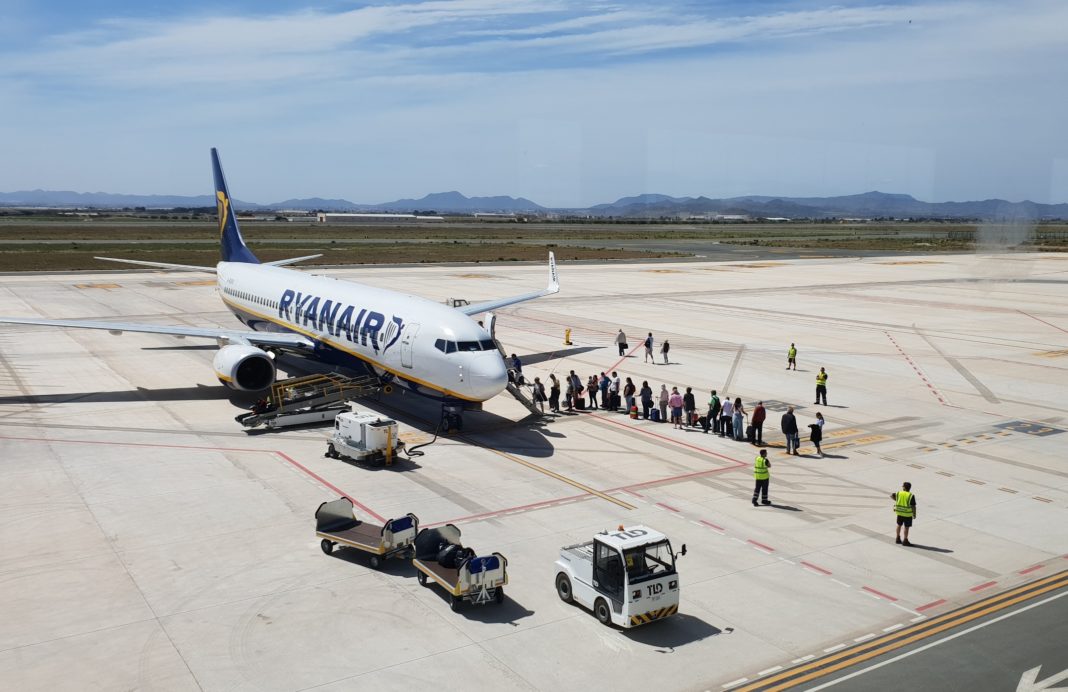Corvera Airport, which will celebrate its first anniversary on Wednesday, has managed to exceed its target of one million passengers in 2019 and has also introduced new national destinations with all-year round flights to the Canary Islands as well as to Barcelona, Asturias, Bilbao and Palma (which will start in spring).
Since last November, when the airport achieved 1,050,058 passengers, it began to generate revenue for the Regional Administration, with Aena now paying 0.84 euros for each passenger it transits over one million but although the airport is now paying back a small portion of it’s original outlay, month after month it is still losing passengers and in November recorded another fall of 173, 000 passengers in relation to the figures achieved by San Javier the previous year.
The results have, therefore, produced a mixed message, and with the impatience of the many people in the tourist sector increasing, and the criticisms of the tourism sector which are increasingly more pronounced in the absence of an adequate promotion of the Region, there are still many questions that need to be answered.
The airport, which remained closed for seven years before being inaugurated, had been one of the great aspirations of the Region, which hoped to achieve a massive influx of tourists with its launch.
Its eventual opening was received as a true feat after a decade of disagreements and lawsuits with the company that built it, Aeromur, and the construction company Sacyr and one year after the opening, there are still pending disputes between the Community and the first concessionaire, which left the Regional Government with a bill of 182 million, the interest payments alone of which amount to 22,000 euros.
The Irish low cost airline Ryanair provided the first arrival at the new airstrip with a flight from the United Kingdom, and whose passengers were greeted with a flock of photographers eager to capture their landing with their cameras.
Shortly afterwards the king himself was on site to preside over the official opening ceremony.
The commissioning of Corvera required a tremendous logistic deployment of Aena personnel, who after closing the San Javier airport following it’s final departure on 14 January, had to move people and equipment from the Mar Menor to their new home in Corvera, also ensuring that everything was operational in time to meet the first arrival on 15 January.
The airline staff and many airport employees, who had attended to the passengers in San Javier, had also to move overnight to the new facilities.
It was the first time that an entire airport had been moved, so there was a lot of concern that it could be carried out successfully, but although there were a number of teething problems, there was nothing of any real consequence that showed the undertaking to be anything other than an extremely successful operation.
In its first year Corvera has managed to incorporate several national routes, most of which will only be operational in the spring and summer months. In 2019 it premiered Volotea airline flights to Asturias and Ryanair flights to Palma de Mallorca.
In October, the Binter company opened another regular line to the Canary Islands, the only national connection that operates through the winter months.
For next season, which begins at the end of March, Volotea has announced a new route to Bilbao and Vueling will fly to Barcelona, so there will be five national flights, if the forecasts are met.
However, the Vueling route to Barcelona causes some scepticism, given that the plane will leave Corvera at ten o’clock at night, which makes it difficult to compete with the schedules offered by Alicante airport, since it forces passengers to spend the night In the Catalan capital.
And outside Spain, the Region will continue to provide flights to the United Kingdom, Ireland, Belgium and Norway.
Corvera facilities are now ready to receive 140 daily flights and up to three million passengers a year but what is not known is how long the airport will need to reach the two million figure, a number that San Javier achieved before the 2007 economic crisis cut it’s commercial activity in half.
Only then will it have gone some way toward compensating the economic effort made by the regional government to provide the Region with an airport that could be operational 24 hours a day.





